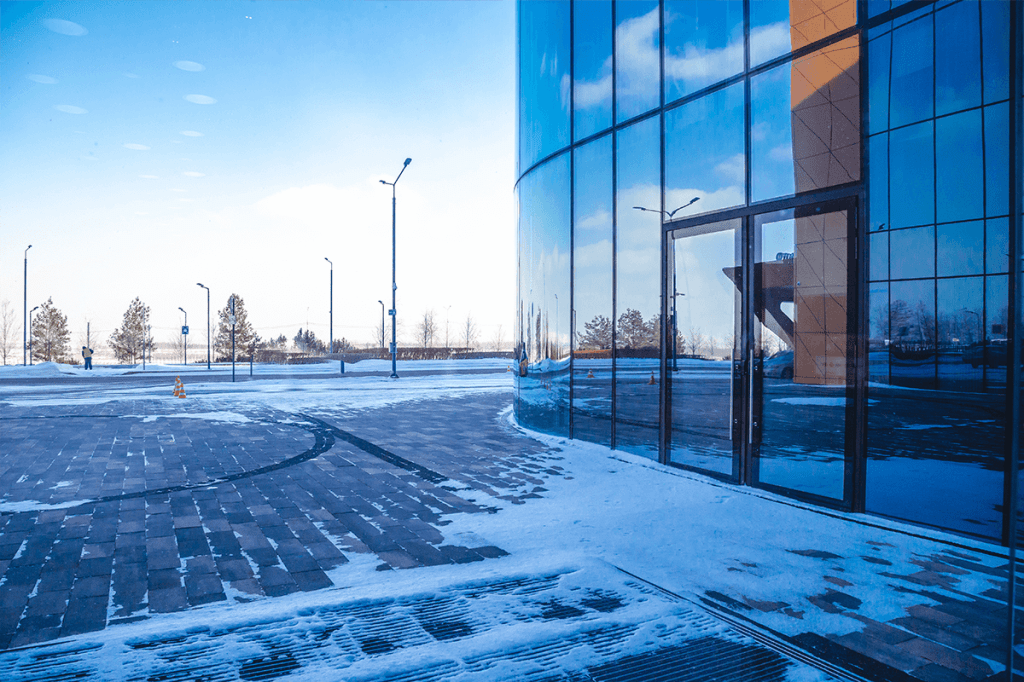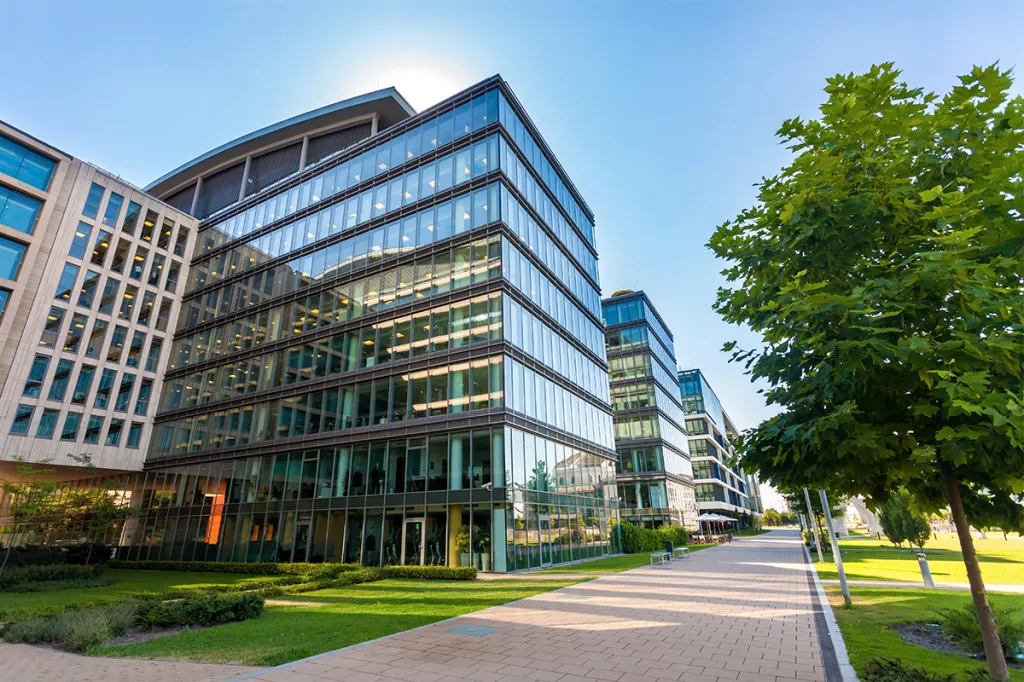
Every year, property managers, landlords and owners must prepare their commercial properties for the cold. Doing so can help you save money on utility bills, protect your property from winter damage and keep your tenants safe and comfortable during the cold winter months. Here are some simple but effective tips to help you winterize your commercial properties.
1. Clean gutters & drains
Gutters and downspouts are critical for diverting water away from the building. (Water damage does not make for a very nice holiday gift.) So, make sure there are no blockages that would prevent them from doing their job. Additionally, look for any loose or missing pieces of gutter, as well as any cracks or holes that need to be sealed up. If possible, consider investing in gutter guards to help keep leaves and debris out of your gutters during fall months.
2. Treat the asphalt
Asphalt can take a beating during the winter. During freeze-melt cycles that occur throughout the season, shifting temperatures can cause the asphalt to expand and contract. The result: cracks, fissures and potholes. It’s important to repair visible damage before winter sets in and stay ahead of damages. Chemical seals can also be applied, which prevents water from seeping into the asphalt and causing internal damage.
3. Examine exterior walls
When it comes to exterior walls, check for any areas where water may enter through cracks or openings in the wall or roofing. Seal up any gaps with caulk or weather stripping, as this will help keep moisture out while also helping your building retain heat when temperatures drop below freezing.
4. Inspect roofing
Winter snowstorms can wreak havoc on a poorly maintained roof. Before temperatures start dropping, make sure to inspect your roof for any potential weak spots or damage that needs to be addressed before it worsens with heavy snowfall or ice buildup. Make sure all shingles are in good condition, repair any holes in the skylights and seal any cracks around vents or pipes. This will ensure a strong barrier against moisture seeping into your building.
The flat roofing on commercial buildings is especially susceptible to damage and collapse. Inspect your roof annually and address any problems before there’s risk of heavy snowfall, which can collapse weakened or unfit roofing.
5. Weatherproof doors & windows
Cold drafts near doors or windows can increase energy bills as well as cause discomfort for tenants. Winterize commercial properties by sealing windows and adding weather stripping around doors. Check for any signs of wear or tear before temperatures drop too low. You may also want to invest in door sweeps or storm windows, especially if you live in an area prone to harsh winters. The extra layer of insulation will help you save money on heating during extreme cold temperatures.
6. Inspect HVAC systems
HVAC systems don’t just cool buildings during hot summer months — they also help keep indoor spaces warm during the winter. Be sure to have your HVAC system checked out by a professional before things get too cold outside. That way, you don’t have any unexpected breakdowns when you need the system most. You should also have ducts inspected for signs of wear and tear. If necessary, have damaged sections repaired or replaced by a professional technician before temperatures drop.
7. Wrap outdoor pipes & sprinklers
When the weather dips below 40 degrees, the water inside pipes can freeze. Some people keep the water running at a slow drip during the winter: the constant water movement prevents freezing. (Water is actually the only liquid that expands when it freezes, which can burst pipes.) It might not be an option to keep the faucets running in a commercial building, but the appropriate heat tape can be applied to outdoor water systems. These heated coils ensure pipes stay above freezing temperatures.
8. Install smart thermostats
Smart thermostats are one of the most popular features for residents and tenants alike. They offer the simplest way to regulate internal temperatures. During an extreme weather event, even in the middle of the night, a smart thermostat will keep temperatures optimal, help prevent freezing and relay information straight to your phone via Wi-Fi.
While most thermostats make adjustments based on a general work schedule (warmer in the day, colder at night), these timers don’t correct for small temperature changes inside and outside the building. Smart devices can even adjust based on humidity, weather, building temperature and more. Some smart systems know when people are in a room, automatically detecting and adjusting temperatures. Better yet, property managers can make changes from their mobile device at any time.
Recover even more costs this winter with utility billing tools
The best way to save yourself time and money in repairs is by being proactive rather than reactive. Doing so can help winterize commercial properties and potentially save thousands of dollars in costly repairs down the road. To maximize your savings potential, consider using professional utility billing and invoice processing such as those integrated with Yardi Breeze Premier. It’s a hassle-free way to automate processing, recover costs and improve energy conservation.



